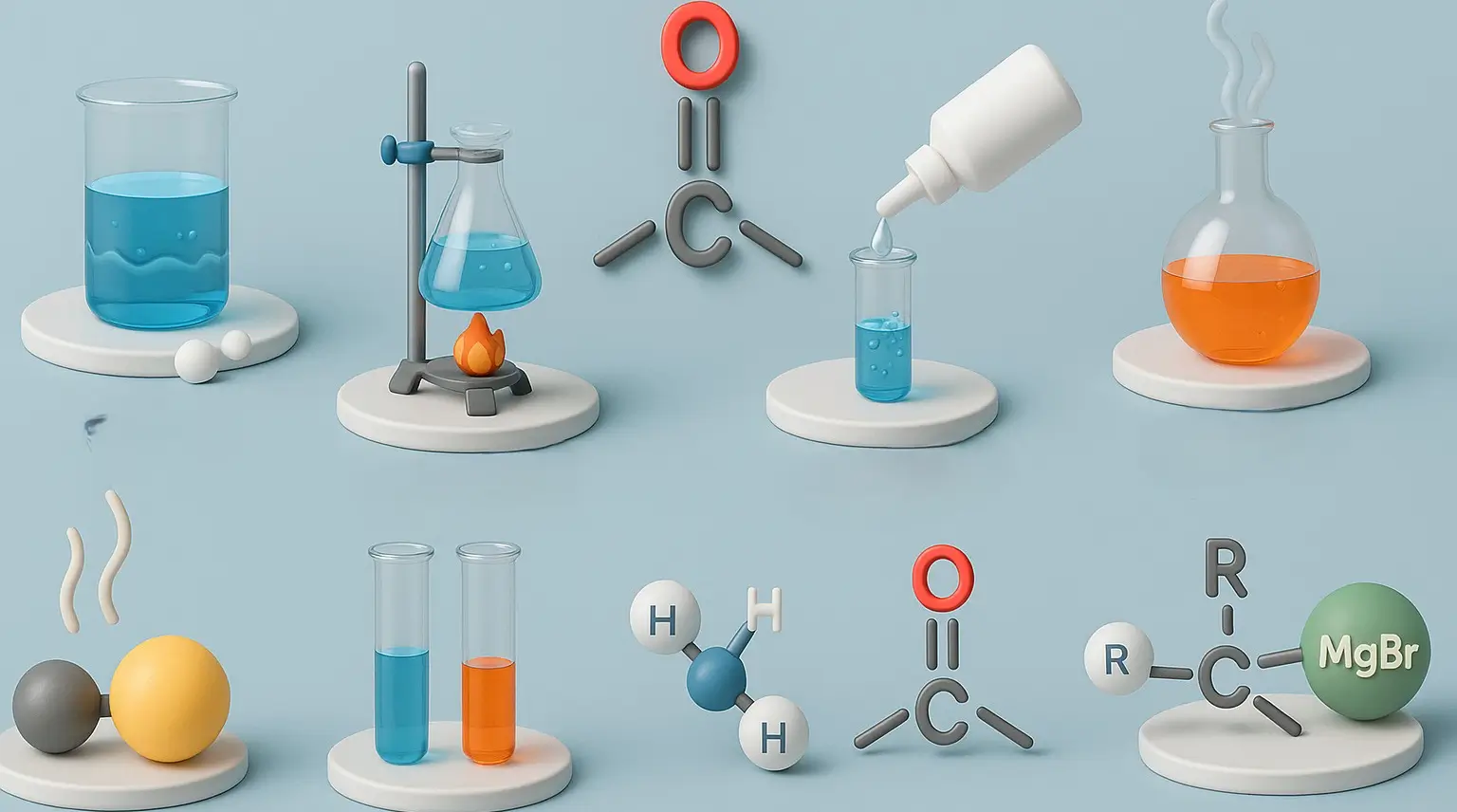Carbonyl compounds Definition
- Carbonyl compounds are organic compounds that contain a carbonyl group (C=O) as their functional group.
- The two major classes are:
Physical Properties
-
Molecular Structure:
- The carbonyl group consists of a carbon atom double-bonded to an oxygen atom, creating a site of high electron density.
- In aldehydes, the carbonyl group is bonded to a hydrogen atom and an alkyl or aryl group. In ketones, it is bonded to two alkyl or aryl groups.
-
Polarity:
- The carbon-oxygen bond is highly polar due to the electronegativity difference between the atoms, resulting in a significant dipole moment.
-
Boiling Points:
- Aldehydes and ketones have higher boiling points than hydrocarbons of similar molecular weight due to dipole-dipole interactions.
- Their boiling points are lower than alcohols and carboxylic acids, as they cannot form hydrogen bonds as effectively.
-
Solubility:
- They are generally soluble in organic solvents and somewhat soluble in water.
- Lower molecular weight aldehydes and ketones are more water-soluble because they can form hydrogen bonds with water molecules.
Chemical Properties
-
Nucleophilic Addition:
- The electrophilic carbon in the carbonyl group is susceptible to attack by nucleophiles.
- This forms the basis of many reactions, such as with amines, hydrides, and cyanides.
-
Oxidation and Reduction:
- Aldehydes are easily oxidized to carboxylic acids by oxidizing agents like KMnO₄ or K₂Cr₂O₇.
- Ketones are more resistant to oxidation but can be reduced to alcohols using reducing agents like NaBH₄ or LiAlH₄.
-
Formation of Hemiacetals and Acetals:
- Aldehydes and ketones can react with alcohols to form hemiacetals and acetals under acid catalysis.
-
Aldol Condensation:
- Aldehydes and ketones can undergo aldol condensation in the presence of a base or acid, forming β-hydroxy aldehydes or ketones.
-
Cannizzaro Reaction:
- Aldehydes without an α-hydrogen undergo the Cannizzaro reaction with strong bases, producing a mixture of a carboxylic acid and an alcohol.
Click Here to Watch the Best Pharma Videos

